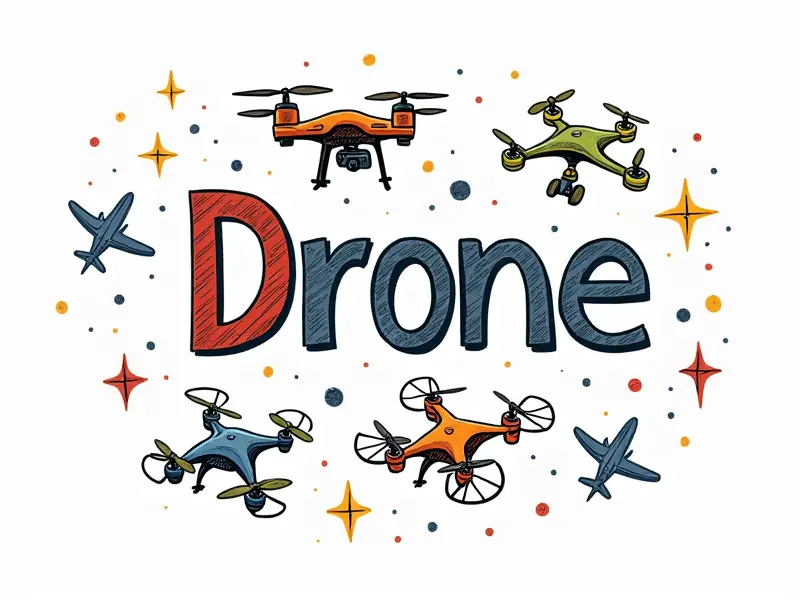What's FPV racing drone?

Introduction to FPV Drones
First-person view (FPV) drone racing has taken the world by storm, captivating enthusiasts and casual observers alike with its adrenaline-pumping excitement. This high-speed aerial sport involves flying small drones equipped with cameras that transmit a live video feed directly to the pilot's goggles or screen. FPV racing combines elements of technology, skill, and competition in a unique and thrilling way.
Why FPV Drone Racing is So Popular
The popularity of FPV drone racing can be attributed to several factors:
- Accessibility: With the advent of affordable drones and components, more people than ever before can participate in this exhilarating sport.
- Innovation: The rapid advancements in technology have led to constant improvements in drone design, camera quality, and control systems.
- Social Aspect: FPV racing fosters a strong sense of community among pilots who share their experiences, tips, and tricks on social media platforms and forums.
The Thrill of FPV Drone Racing
Flying an FPV drone is unlike any other experience. As you strap on your goggles and take control of the aircraft, you are instantly immersed in a first-person perspective view. The sensation of speed and maneuverability provides an unparalleled adrenaline rush as you navigate through tight courses or perform aerial stunts.
How Does FPV Drone Racing Work?
The mechanics behind FPV drone racing involve several key components:
- Drones: Typically small quadcopters designed for high-speed flight and agility.
- Cameras: High-resolution cameras mounted on the front of the drone to provide a live feed.
- Video Transmitters (VTX): Devices that transmit the camera's video signal to the pilot’s goggles or screen.
- Goggles/Screen: Receivers that display the live video feed from the drone.
- Remote Control: A specialized controller used to control the drone's movements and actions.
FPV Drone Components Explained
To fully understand FPV racing, it’s essential to know about each component involved:
- Frame: The structural foundation of the drone, designed for durability and aerodynamics.
- Motors & Propellers: Provide thrust and control over the drone's flight path.
- Battery: Supplies power to all onboard systems, critical for sustained performance.
- Flight Controller (FC): Manages the drone’s stability and navigation functions.
- ESC (Electronic Speed Controllers): Regulate motor speed based on input from the flight controller.
- Antenna: Ensures clear transmission of video signals to the pilot's goggles or screen.
Best FPV Cameras for Drones
Selecting the right camera is crucial for an optimal FPV experience. Some top choices include:
- Runcam Swift 2: Known for its excellent image quality and wide-angle lens.
- TBS Unify Pro Black: Offers superior night vision capabilities and high frame rates.
- Holybro Pixy: Compact design with advanced features like automatic exposure control.
Tips for Flying FPV Drones
To enhance your flying skills, consider these tips:
- Practice: Regular practice is key to mastering the nuances of FPV flight.
- Start Slowly: Begin with simple maneuvers and gradually increase difficulty.
- Use Training Goggles: These simulate a first-person view without the risk of damaging your drone.
- Join Local Clubs: Engage with experienced pilots who can offer valuable advice and guidance.
FPV Drone Racing: Rules & Etiquette
While FPV racing is an exhilarating sport, it’s important to adhere to certain rules and etiquette:
- Safety First: Always prioritize safety by wearing protective gear and flying in designated areas.
- No Fly Zones: Respect no-fly zones such as airports, military installations, and restricted airspace.
- Respect Others: Be courteous to fellow pilots and spectators, avoiding reckless behavior that could harm others or property.
Choosing the Right FPV Gear
Selecting appropriate gear is crucial for a successful FPV racing experience. Consider factors such as budget, skill level, and intended use:
- Budget: Determine how much you are willing to spend on your setup.
- Skill Level: Choose components that match your current proficiency and allow for growth.
- Purpose: Decide whether you want a racing drone, freestyle drone, or something else entirely.
FPV Drone Safety Tips
Safety should always be the top priority when engaging in FPV racing. Follow these guidelines to minimize risks:
- Wear Protective Gear: Use helmets, goggles with built-in safety features, and other protective equipment.
- Fly Responsibly: Avoid flying over crowds or near obstacles that could cause injury if the drone malfunctions.
- Check Weather Conditions: Poor weather can affect flight performance; avoid flying in extreme conditions.
FPV Drone Setup Guide
Setting up your FPV racing drone involves several steps:
- Choose Your Components: Select a frame, motors, propellers, battery, flight controller, ESCs, and camera.
- Assemble the Frame: Carefully assemble the frame according to manufacturer instructions.
- Install Motors & Propellers: Attach motors securely and install appropriate propellers.
- Connect Electronics: Wire up the flight controller, ESCs, battery, and camera system.
- Calibrate Systems: Calibrate your flight controller and other electronic components for optimal performance.
Conclusion
Flying FPV drones is an exhilarating hobby that combines cutting-edge technology with thrilling aerial acrobatics. Whether you are a seasoned pilot or just starting out, there is always something new to learn and explore in the world of FPV racing. By understanding the basics, choosing quality gear, and adhering to safety guidelines, you can enjoy this exciting sport while minimizing risks.

